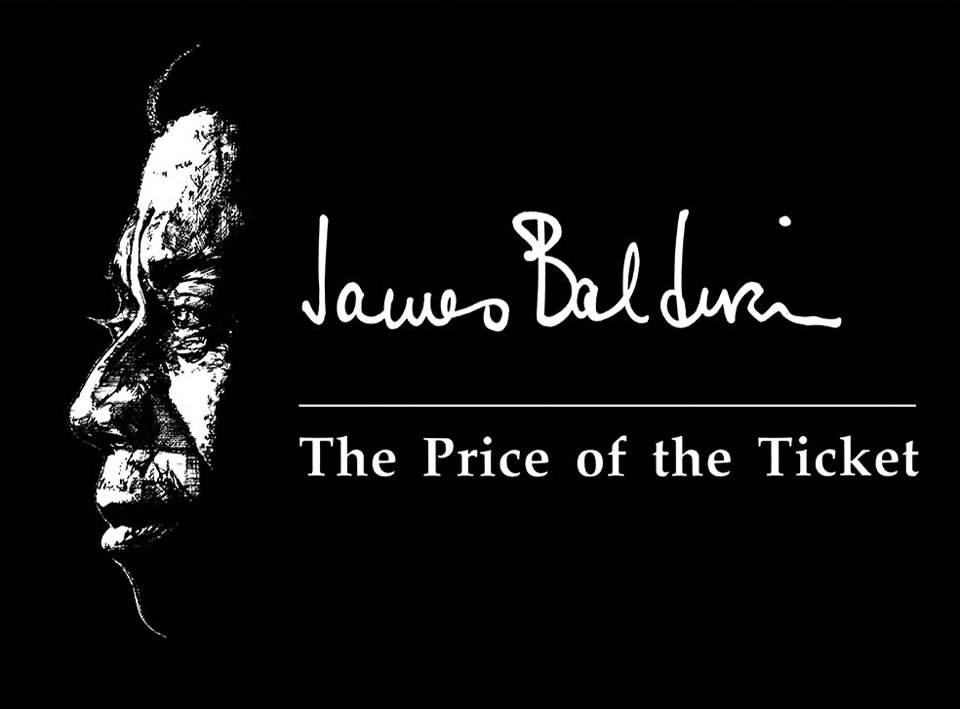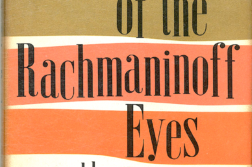James Baldwin came alive as never before in Karen Thorsen’s documentary James Baldwin: The Price Of The Ticket, first released in 1990 and rereleased on its 25th anniversary in a newly restored print. Doubly enhanced by the collaboration of the late Maya Angelou, who provided live readings of Baldwin’s work and acted as scholar–advisor for the original film, this refurbished and brightened version of the documentary fleshes out Baldwin’s tactile characteristics in a manner rarely captured by any of his literary biographers. Here his fey appearance—gay affect, clipped vocal mannerisms, and mincing steps—warms the heart.
A voiceover of Baldwin’s social and political wisdom accompanies the opening credits that lead directly to scenes from Baldwin’s funeral service at St. John the Divine in Morningside Heights, beside Columbia University. The cathedral’s magnificent, towering ceiling competes with large African drums set at the foot of the altar sending majestic percussive proclamations echoing off the walls. This sublime dissonance is enhanced by the clergy in high liturgical garb moving between the celebrants toward the African-attired percussionists. The celebratory though subdued mood of the congregation also contrasted with the vision of Baldwin’s mother, inconsolably contorted though held in check by grieving relatives.
 Thorsen whisks us away from this extraordinary cacophony associated with his death back to Baldwin’s early years. With the assistance of historical footage interspersed with enactments and commentary from then living writers, the film touches down on Baldwin’s birthplace in Harlem on Park Avenue, offering a vision of his intimidating father and the 135th Street library, where he assiduously taught himself world literature. We learn again that he began to write creatively from at least the age of eight, that P.S. 24 was his grammar school, and Central Holiness Church of Harlem his spiritual foundation.
Thorsen whisks us away from this extraordinary cacophony associated with his death back to Baldwin’s early years. With the assistance of historical footage interspersed with enactments and commentary from then living writers, the film touches down on Baldwin’s birthplace in Harlem on Park Avenue, offering a vision of his intimidating father and the 135th Street library, where he assiduously taught himself world literature. We learn again that he began to write creatively from at least the age of eight, that P.S. 24 was his grammar school, and Central Holiness Church of Harlem his spiritual foundation.
While I enjoyed these memories, the film also revealed aspects of Baldwin’s body to which I had paid very little attention. Though I had met him once, I did not recall how short he was: a small, lower body topped by a boyish chest and shoulders upon which rested a formidable head. His wide, otherwise notable nose is overshadowed by his inescapably wide, bulging eyes. The well-recognized wrinkles of his forehead are shown to deepen over time, producing those ever-present, intensely etched horizontal furrows that, in turn, intersect with increasingly pronounced vertical creases that plunge down to just above the bridge of his nose. These features speak to his state of deep contemplation that seemed almost perpetual. Overall, I was taken by Baldwin’s lithe physicality as juxtaposed against his sharp jeremiads.
Suddenly, a familiar African-American trope slices the air as Baldwin reveals that once a waitress refused to serve him, explicitly attributing her decision to his color, thus triggering a crisis in his early psychic life. The full impact of Jim Crow appears to have entered his consciousness at that moment, rocking his basic sense of self. The many similar slights that would follow in the wake of this epiphany Baldwin would later, during his time in France and Turkey, “vomit up.”
From Paris to Algiers, to Turkey, and to the south of France, viewers witness the great drinker and smoker, indeed the iconic wielder of cigarettes: here Bette Davis had nothing on Baldwin. Scenes of international locales divert us as Baldwin makes his way from place to place, affording spectators a view of his positions on a range of topics—his compassion for the French Algerian underclass and his appreciation of traditional Turkish culture, for example. Clearly, Baldwin’s reasons for travel were not those of a tourist; unfamiliar places helped him to see himself more clearly.
The film focuses on a number of his novels, such as Giovanni’s Room, Go Tell It on the Mountain, Another Country, and If Beale Street Could Talk, along with his play Blues for Mister Charlie. Baldwin may have sharpened his craft prior to writing these powerful books while working as a book reviewer. He indicates that most of the volumes he reviewed were about race relations—scholarship, one might say, that allowed him to explore such issues more broadly than he otherwise might have even while honing his writing skills.
The choice of Maya Angelou to narrate portions of Baldwin’s works—her mellifluent tones heard throughout—ratchets up the historical significance of this film immensely. Also featured is writer and poet Amiri Baraka, who offers searing political and social commentary and a summation of Baldwin’s life and politics. We’re reminded of the enormous impact that the assassinations of Martin Luther King, Jr., Medgar Evers, Robert Kennedy, and Malcolm X had on Baldwin’s artistic sensibility. In light of these volatile issues and events, Baldwin challenged, not necessarily self-avowed racists, but liberal Americans who were blind to their paternalism and ignorance in the face of black oppression. To paraphrase one commentator, Baldwin was “telling white America what it means to be black.” The film reveals that Baldwin remained tuned in to his need to shine a light on black life and assist those of good faith with an interest in eradicating racial oppression.
I cannot recall another documentary on a black writer that contained such breadth and resonance. Scenes of Baldwin asleep, in his underwear, walking down the street, talking to children, visiting bars, etc.—his resplendent soul always down-to-earth—were lovingly and delicately recorded in this film. A deeply humble man, he never strove for anything that would take him above the dignity of his mother, despite his celebrity status. For this reason, one might wonder at the pomp and circumstance at the Cathedral of St. John the Divine in celebration of his passing. He was a man of the people, working in the vineyard to speak the truth as he knew it.
Gordon Thompson is professor of English and African American Studies at City College of New York.






